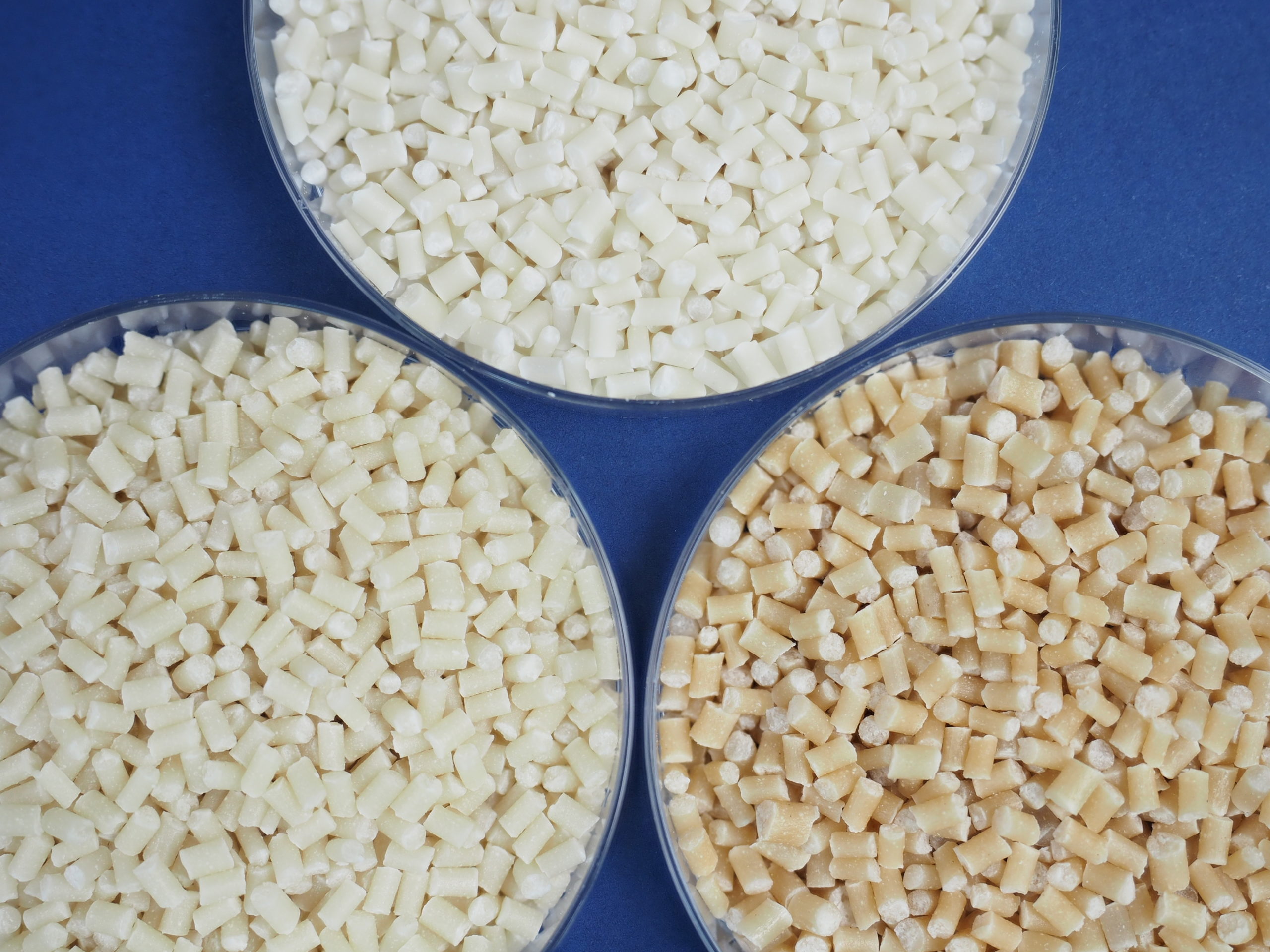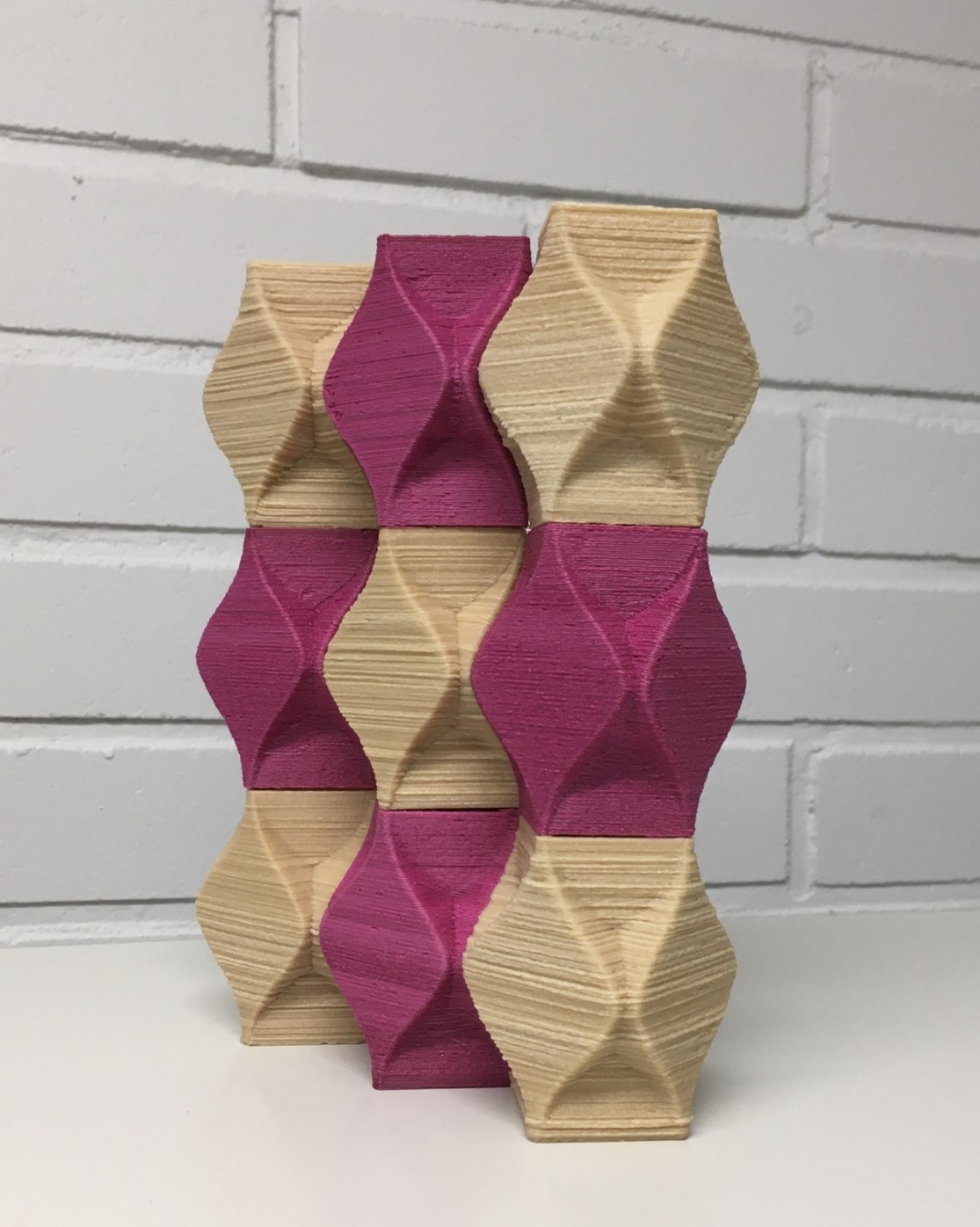Authors: Heli Kangas1, Kirsi Immonen1, Sini Metsä-Kortelainen1, Tomi Kalpio2, Leo Staccioli3
1VTT Technical Research Centre of Finland Ltd, 2Brinter Oy, Finland, 3 Arditec Association, France
There is a worldwide trend towards more sustainable materials and processes, driven by consumers and legislators alike. This has given companies in many industrial sectors a push to review their corporate strategies and include commitments for increased sustainability and decreased CO2 emissions. Bio-based materials originating from nature play a significant role in the development of more sustainable materials. The key challenge however is how to achieve material properties comparable to existing fossil-based materials and how to process the bio-based materials with existing machinery, in order to avoid significant investments to new equipment.

Thermoplastic cellulose-based composite material, printable in granule form
Cellulose is a good candidate for fossil-based material replacement as it is common in nature, present in all living plants, and it has many desirable properties. However, the use of cellulose in additive manufacturing is limited by the fact that it is not thermoplastic in nature. In the on-going EU funded project NOVUM, this limitation has been addressed by developing a thermoplastic cellulose-based composite material which is processable by additive manufacturing and also by injection molding. During the project, the use of the material in component manufacturing will be demonstrated in three industrial sectors; electrical insulation, automotive and ship building.
The aim of the development work was to maximize the cellulose content of the composite, in order to better suit the target end use applications under evaluation in the project. One example are electrical insulation components used in power transformers, which are usually 100% cellulose. Different compounds were tested, using cellulose acetate propionate (CAP) as the polymer matrix and microcellulose and cellulose esters as additives.[1] The cellulose content of the composite is high, up to 70%, compared to other cellulose-containing compounds in the market. Microcellulose improves the stiffness of the material, while the cellulose esters act as a plasticizer. The materials are printable in granule form, which gives them a competitive edge as filament production can be skipped. However, they can printed in filament form also. When comparing the mechanical properties of the printed compounds to a commercial cellulose-containing compound, based on polylactic acid (PLA), it was found that the developed compounds had comparable tensile and Charpy impact strength properties, while the modulus was lower. They also showed over 58% higher glass transition temperature and 12% higher heat distortion temperature (up to 82°C), compared to the reference.
Recyclability of the cellulose-based composites was studied by printing the compounds, grinding the components and then printing them again as such.[2] Analysis of morphology, mechanical and thermal properties and material degradation revealed that the thermoplastic cellulose compounds were recyclable by granular printing without additional compounding directly after printing at least for seven recycling cycles without degradation and retaining their material properties. The microcellulose in the compound was found to be the most sensitive to thermal stress during the recycling process.

Printing of electrical insulation component from the cellulose-based composite material
The environmental impacts of the novel thermoplastic cellulose-based material were assessed using Life Cycle assessment (LCA). The material formulation was investigated and compared to acrylonitrile butadiene styrene (ABS), a common material used in the automotive industry. The impact categories addressed in the assessment were Global warming potential (GWP) and Fossil depletion potential (FDP). The preliminary comparison of the two materials showed that the CO2 emissions for production of 1 kg of the cellulose-based composite were 20% less than for the same amount of ABS. In addition, the use of fossil resources was 60% less for the cellulose-based composite compared to ABS.

Decorative elements printed from the cellulose-based composite material
The optimization of the cellulose-based composite material continues, in order to fulfill the requirements of various end use applications, for example related to fire and heat resistance. However, the results obtained to date already show that there is significant potential to tailor the novel cellulose-based thermoplastic composite material for versatile end uses. In addition, it has been shown that sustainability impacts will be gained when replacing fossil-based materials with the cellulose-based ones. Parallel to material development, a new modular and scalable pilot line showcasing the granular printing technology has recently started operating in Finland. The uniqueness of the pilot line comes from the combination of the manufacturing technology and the cellulose material development, targeting to generate sustainable products that fit the end-use requirements by more efficient processing.
[1] Immonen et al. Thermoplastic cellulose-based compound for addtive manufacturing. Molecules 26(6), 1701, 2020. 10.3390/molecules26061701
[2] Immonen et al. Recycling of 3D printable thermoplastic cellulose-composite. Sustainability, accepted for publication.
Heli Kangas, Technology Manager for Biomass Processing and Products at VTT Technical Research Center will be participating in Additive Manufacturing Strategies 2022, Panel 3: Composites.
Subscribe to Our Email Newsletter
Stay up-to-date on all the latest news from the 3D printing industry and receive information and offers from third party vendors.
You May Also Like
3D Printing News Briefs, April 13, 2024: Robotics, Orthotics, & Hypersonics
In 3D Printing News Briefs today, we’re focusing first on robotics, as Carnegie Mellon University’s new Robotics Innovation Center will house several community outreach programs, and Ugogo3D is now working...
Rail Giant Alstom Saves $15M with 3D Printing Automation Software 3D Spark
3D Spark has entered into a three-year deal with the rail giant Alstom. Alstom, a transport behemoth with annual revenues of $16 billion, specializes in the manufacture of trains, trams,...
Meltio Expands Global Reach with New Partnerships in the Americas and Europe
Spanish 3D printing manufacturer Meltio has expanded its sales network across the globe. With the addition of three new partners in the United States, Brazil, Argentina, and Italy, Meltio aims...
3D Printing Webinar and Event Roundup: April 7, 2024
Webinars and events in the 3D printing industry are picking back up this week! Sea-Air-Space is coming to Maryland, and SAE International is sponsoring a 3D Systems webinar about 3D...































